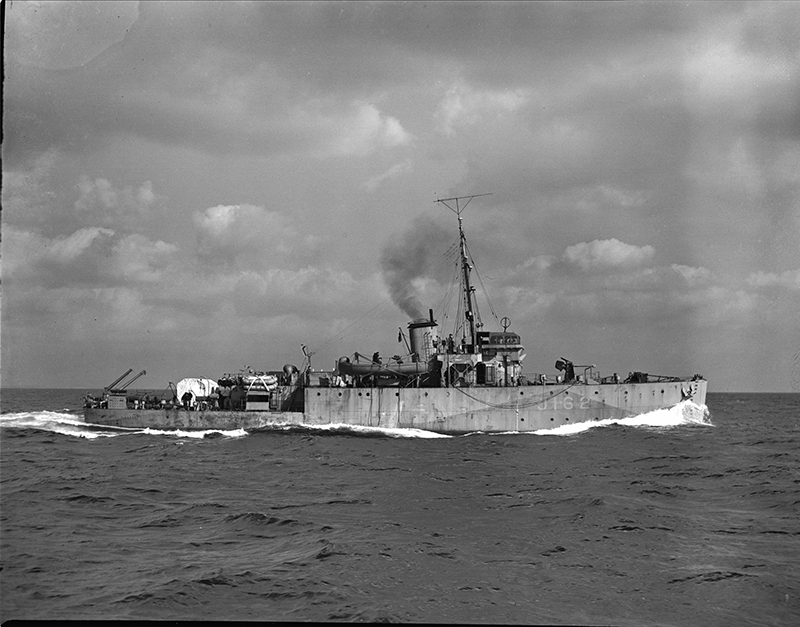HMCS Wasaga
There has been only one vessel named Wasaga in the Royal Canadian Navy.
HMCS Wasaga (J152) / Bangor-class minesweeper
The Bangor class ships were built in order to replace the old Basset-class minesweepers, as they were larger, faster, had much greater endurance, and burned oil as opposed to coal.
As enemy mines were laid only once in 1943 in Canadian waters, the Bangors were used primarily as escorts to coastal shipping or as local escorts to ocean convoys. Sixteen of them, however, assisted in sweeping the approaches to Normandy before D-Day, and stayed to help clear German and Allied minefields in the Channel for some months afterward.
The first of the Royal Canadian Navy’s Bangors, HMCS Wasaga was commissioned at Vancouver, British Columbia, on 30 June 1941. She left Esquimalt, British Columbia, on 6 August for Halifax, Nova Scotia, arriving on 10 September. Sent to Bermuda for work-ups, she was assigned to Halifax Force on her return. In March 1942, she was transferred to Newfoundland Force, and in January 1944 to Sydney Force. Ordered to the United Kingdom for invasion duties, she sailed from Halifax on 21 February 1944 via the Azores, in company with HMCS Canso, HMCS Guysborough and HMCS Kenora. Arriving at Plymouth in early March, she was first assigned to the 32nd and then to the 31st Minesweeping Flotilla, and was on hand on D-Day. She sailed for Canada on 30 September 1944 to refit at Charlottetown, Prince Edward Island, returning to Plymouth on 4 February 1945. That September, she returned to Canada and was paid off at Halifax on 6 October 1945, before being laid up at Shelburne, Nova Scotia until sold for scrap in 1947.
- Builder: Burrard Dry Dock Co. Ltd., Vancouver, British Columbia
- Date laid down: 3 September 1940
- Date launched: 23 January 1941
- Date commissioned: 30 June 1941
- Date paid off: 6 October 1945
- Displacement: 682.8 tonnes
- Dimensions: 54.9 m x 8.7 m x 2.5 m
- Speed: 16 knots
- Crew: 83
- Armament: one 4-inch (102-mm) gun, two 20-mm guns (2 x I), and depth charges
Battle honours
- Normandy 1944
- Atlantic 1944
